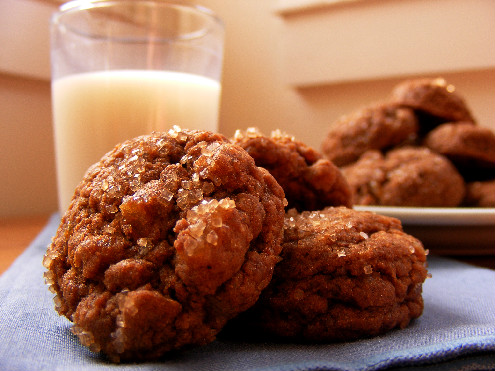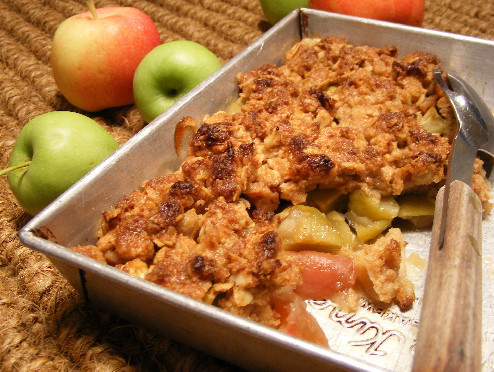Ginger: Chewy Triple Gingerbread Cookies
Sunday, December 5th, 2010If you are a ginger fan you’re going to love these chewy, spicy gingerbread cookies.
Ginger is perfect this time of year – the peppery spice warming tastebuds and tummies. Although this ancient spice is native to China and India, it is one of the most popular spices of the world. . .
Gingerbread History
What we know as gingerbread today is far from its original form. In fact, what was referred to as “gingerbread” in medieval English cookery, was actually a medicinal candy made of ginger and sugar. Back then, the term was used loosely to refer to candy as well as breads, which were also eaten for medicinal purposes. Later gingerbread evolved into a highly spiced honey cake, influenced by the German Lebkuchen and Roman honey cakes.
In the 1500s, English gingerbreads denoted highly spiced, crisp cookies. They were eaten after dipping in wine or cider and were also used for holiday ornaments. The crisp cookie version carried over to the new world. Then, when leavening agents were introduced, the term “gingerbread” in the U.S. referred to ginger-spiced cakes.
Whether cake or cookie, “gingerbread” has been enjoyed during the holidays for hundreds of years. And, although there were special gingerbread bakers in Europe who were a distinct sub-group of the baker’s guild, no special certificate is required to make these cookies.
Hard v. Chewy Gingerbread Cookies
I’m not a fan of the hard-as-brick versions of gingerbread and the thin ginger snaps aren’t interesting to me – I’m more a fan of the ginger and not the snap. So, the recipe below is for a thick, chewy and spicy ginger cookie.
Apparently, the key to getting a chewy cookie is having at least 4 tablespoons butter per cup of flour. Cooks Illustrated got me straight on that. However, as far as process, Heidi at 101 Cookbooks (one of my favorite food bloggers) made some triple ginger cookies awhile back that did not require pulling out the food processor or mixer.
The recipe below is adapted from both. These cookies are the trifecta of ginger – fresh, ground and crystallized. It’s aggressive but not overly sharp, balanced by the molasses. If you’ve followed me for awhile you know I don’t like things super sweet. If you do, up the sugar a few tablespoons and also roll the balls of dough in large grain sugar before baking.
These chewy gingerbread cookies would be great in a holiday cookie exchange.







